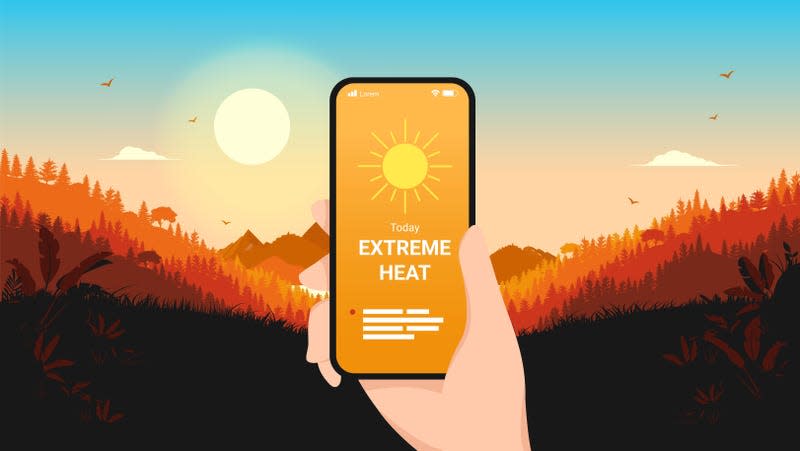The World's Getting So Hot, Scientists Needed a New Color

On Earth Day, the National Weather Service and the Centers for Disease Control and Prevention teamed up to announce a new heat risk system to better communicate the severity of hot weather. The color-coded system added magenta, a fifth-tier of heat severity, beyond red, to communicate extreme heat “rare and/or long-duration extreme heat with little to no overnight relief,” according to the Associated Press.
The new risk system also projects out extreme weather in a seven-day forecast, allowing the public to prepare for heat accordingly. The color-coded system is as follows: green means there is no heat risk, yellow and orange indicate risk to heat-sensitive individuals who lack cooling and/or hydration, red indicates a high risk for the entire population, and magenta corresponds to a very high risk for the entire population over an extended period of time.

“Heat can impact our health, but heat-related illness and death are preventable,” said Mandy Cohen, the CDC’s director, in a release. “We are releasing new heat and health tools and guidance to help people take simple steps to stay safe in the heat.”
According to the AP, the red alert is used when a day is within the 5% of hottest days for a given area at a certain time of year; the alert is heightened to magenta when other factors, such as the duration of the heat wave, come into play.
A version of the heat risk map has been used in the western United States, but now an updated version will be deployed nationwide. The map “is the first multi-tiered framework that applies a consistent approach across different climate regions, incorporates high-resolution climatology and locally-relevant health evidence, and provides decision makers with a heat service that is easy to use and yet appropriate from a public health standpoint,” the CDC and NWS collaboration states on its website.
May through September 2023 were the hottest warm-season months ever recorded in the United States, according to the CDC, causing heat-related visits to the emergency room to increase nationwide. According to the National Oceanic and Atmospheric Administration, 2023 was by far the world’s hottest year on record; the planet hasn’t had a colder-than-average year since 1976.
Warning signs of heat-related illness, such as heat stroke and heat exhaustion, include dizziness, headaches, clammy or damp skin, excessive sweating, and fainting. A complete list of symptoms and what to do about them can be found on the CDC website.

